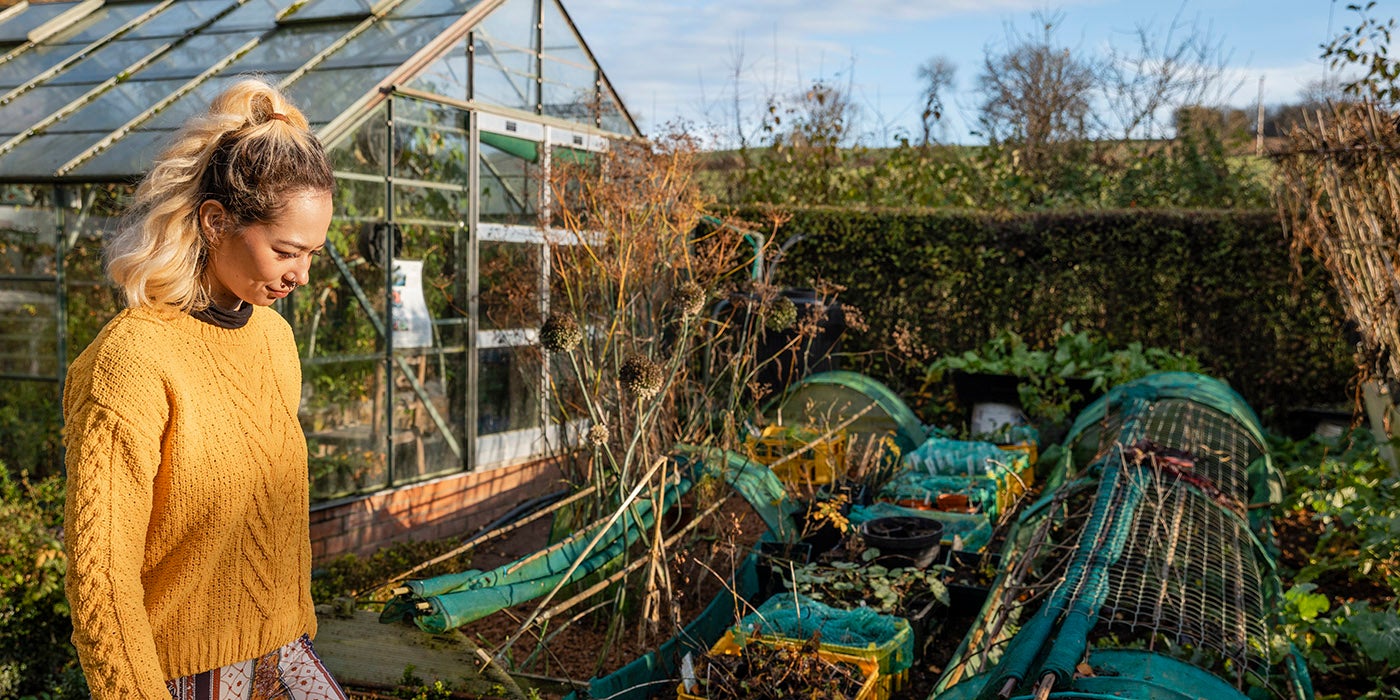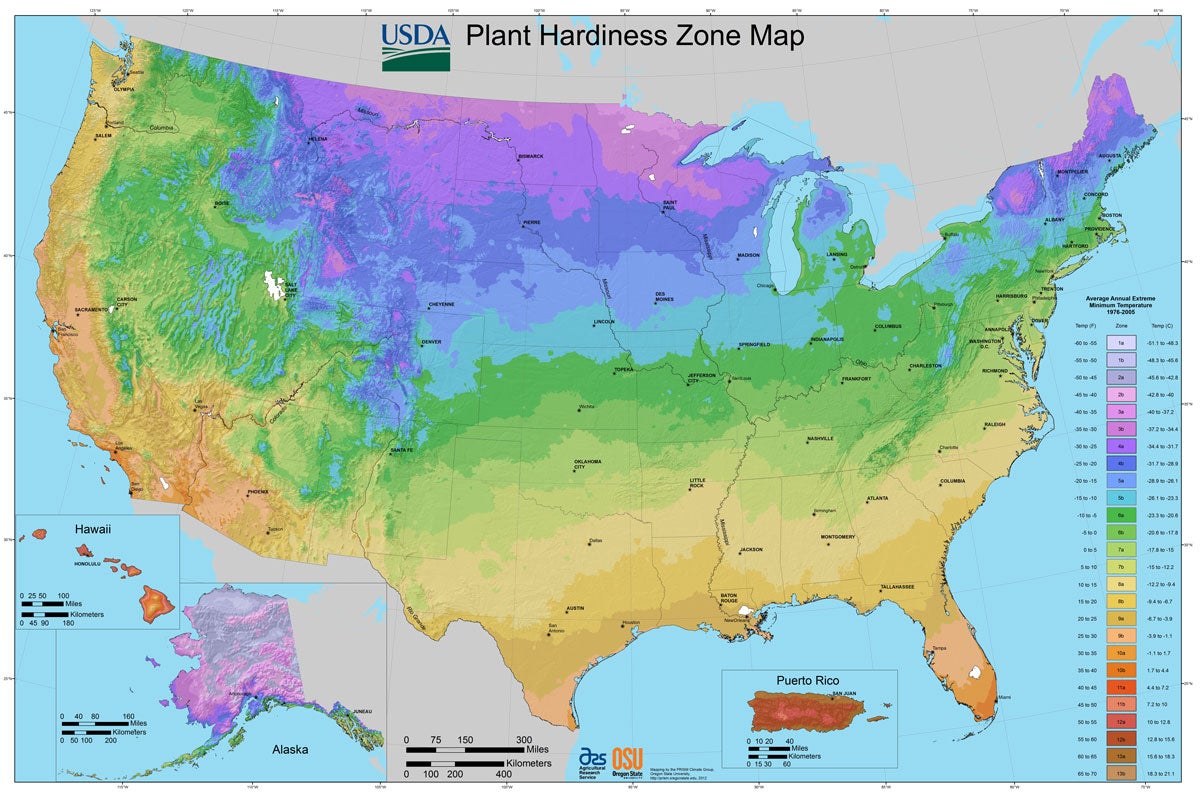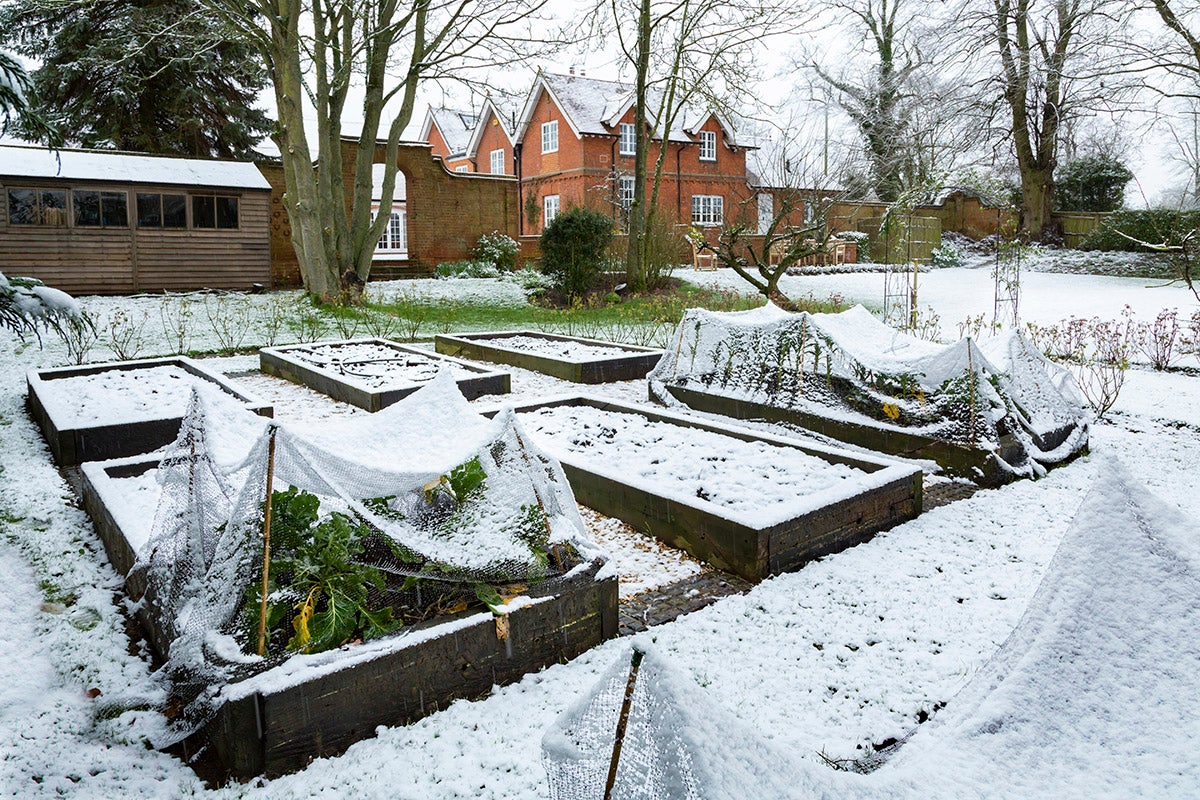Why Have a Winter Garden?

Wintertime doesn't have to be a dormant season for gardeners. There are still plenty of vegetables that can thrive and be harvested even as the temperature turns colder. No matter the climate or plants you prefer to grow, a winter garden is a great way to keep your hands in the dirt and extend the growing season to enjoy fresh, homegrown produce year-round.
Why have a winter garden?
A winter garden can be a great way to extend your growing season. In cold weather climates where outdoor growing is not an option through the snowy and freezing winter, crops such as garlic, cabbage or mustard greens are hardy enough to survive a frost. Otherwise, bring plants indoors or start new ones in preparation for spring. A greenhouse or conservatory is a great option, but you can start an indoor garden using potted plants and grow lights.
In geographies with more moderate winters, such as the southern United States, warmer winter temperatures can sustain many crops in an outdoor garden. Vegetables like salad greens, radishes, carrots, garlic, onions, Swiss chard, peas and kale might struggle in the hot summer sun but thrive in cooler southern winter. Brussels sprouts, broccoli and cauliflower are also good options. And it’s not uncommon to find herbs, such as thyme, sage, oregano, parsley, lavender and rosemary alongside the holiday wonderland display at a southern garden center.
What to grow in your winter garden
Depending on where you live, you may be able to extend your gardening season well into the winter months. By planting cold-hardy crops, you can enjoy fresh fruits and vegetables even when the snow is flying. The United States Department of Agriculture's (USDA) Plant Hardiness Zone Map is a great resource for gardeners to find the best cold-hearty crops for their location. The map is divided into zones based on the average annual minimum winter temperature.

Choosing the right plants
The timing of the first killing frost is everything when it comes to winter gardening. When choosing plants for a winter garden, it is important to select varieties that will thrive in the colder months.
- Zone 4 first frost: mid September
- Zones 5, 6 and 7 first frost: mid October
- Zone 8 first frost: mid November
- Zone 9 first frost: mid December
To ensure that your crops have time to mature before the first frost, it is also important to know the approximate maturity lengths for different plants.
Slow maturing crops

Slowly maturing crops take about 100 days to mature. Successfully growing these crops in the most northern zones 1, 2 and 3, is challenging at any time of year. But in more southerly zones, can be ready for harvest in early winter, if planted in time.
Examples of slow maturing crops include:
- Beets
- Brussels sprouts
- Cabbage
- Carrots
- Peppers
- Onion
- Cantaloupe
- Parsnip
To ensure a good harvest in time for the first killing frost, plant by:
- Zone 4 – June 1
- Zones 5, 6 and 7 – July 1
- Zone 8 – August 1
- Zone 9 – September 1
Middle maturing crops

Cold-hardy crops are those that typically mature within 55 to 70 days. Examples of middle-maturing crops are:
- Kale
- Radish
- Turnips
- Collards
- Chard
- Squash
- Leeks
- Kohlrabi
- Scallion
Ready to harvest in 55 to 70 days, you can get these plants in the ground slightly later in the season to be ready for harvesting in winter.
- Zone 4 – July 1
- Zones 5, 6 and 7 – August 1
- Zone 8 – September 1
- Zone 9 – October 1
Fast maturing crops

Many leafy greens can reach maturity in only about 40 days. These include:
- Mustard greens
- Bok choi
- Lettuce
- Spinach
- Chicory
- Endive
- Arugula
For the most southern zones, plating these fast-growing crops as late as autumn can still yield a successful winter harvest.
- Zone 4 – August 1
- Zones 5, 6 and 7 – September 1
- Zone 8 – October 1
- Zone 9 – November 1
Use these planting dates as guidelines, pay attention to weather variations and experiment to discover the planting schedule that works best for you. With a little planning and effort, you can enjoy a bountiful winter garden.
Indoor winter gardening
Sensitive crops, such as tomatoes, eggplant and peppers can do quite well over the winter when grown indoors and provide some additional fresh produce during the winter months. An indoor garden is also a great way to start these plants in late winter for a summer garden. Vegetables such as brussels sprouts and broccoli can be cultivated from seed indoors as soon as you’ve packed away the holiday decorations and be ready to transplant in early spring, and tomatoes as early as May or June, depending on your zone.
Outdoor winter gardening
Outfitting your existing garden plot for winter gardening requires no complicated setup or high-tech equipment. Plants just need extra shelter from wind, excessive moisture and temperature extremes. This can be as simple as covering them with a tarp or blanket, or you may need to invest in a small greenhouse or cold frame.
Another option is to start a container garden with a few plants in individual pots. This has the advantage of being easily picked up and carried indoors if the

Watering your winter garden
Indoors or out, your winter garden plants will need regular watering to stay healthy. The ambient humidity is typically lower in winter, so check the soil moisture level regularly and water when needed. Watering an outdoor garden in near-freezing temperatures may sound like a bad idea, but as long as you irrigate early in the day, the water can actually act as a trap for heat and help protect your plants from overnight freezing.
Drip irrigation is a simple way to water individual plants for a winter garden, whether inside or out. Drip emitters direct water to the base of the plant where it can soak into the roots rather than being sprayed onto leaves where it can freeze. Also, since the drip tubing takes up little space and emitters produce no overspray, your indoor planting area stays dry and mess-free. Add a hose end timer to automate your indoor drip system for even more convenience.
While it may be colder outside, that doesn't mean you can't enjoy some fresh produce from your own garden. So, get ready to start planting-just make sure you do so before the first frost!
